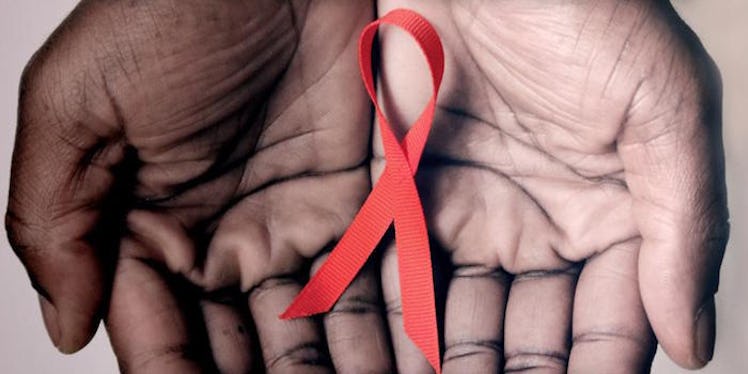Today is World AIDS Day, so let’s all take a few minutes to self-educate.
There are certainly many crucial facts to know about both HIV and AIDS.
Becoming well versed with both is beneficial to everyone. Doing so helps end associated stigmas, and can also drastically decrease the chance of exposure to HIV.
When it comes to HIV and AIDS, some important characteristics separate the two, while they remain closely interconnected.
Here are three important and distinguishing facts:
HIV is a Virus, AIDS is a Condition
HIV is a virus.
The acronym stands for human immunodeficiency virus.
Certain exposure to it can lead to infection.
This virus attacks the immune system and only infects humans. When someone gets HIV, immune systems are greatly weakened and aren’t able to work as normal.
People get HIV through close contact with HIV-infected fluids, such as semen, vaginal secretions and blood.
Almost all cases of HIV infections result from sharing injection drug needles, partaking in unprotected sex with an individual that is infected with HIV or being born to an HIV-positive woman, who is not actively taking antiretroviral therapy.
Unlike more typical viruses, immune systems are not able to thoroughly clear out HIV. Fortunately, modern day medications are able to control it auspiciously.
AIDS (acquired immunodeficiency syndrome) is a condition.
Being infected with HIV can lead to having AIDS as it’s a predecessor.
In an extremely small percentage of cases, people have allegedly gotten AIDS without HIV, although this is not a mainstream belief.
When HIV causes significant damage to the immune system, AIDS typically develops if not treated properly.
Symptoms vary by individual, as it is a multifarious condition.
When people are infected with AIDS their bodies are unable to combat infections compared to how they previously would have.
Serious symptoms can include pneumonia, cancer, tuberculosis and other infections.
It’s Possible to Have HIV and Not Get AIDS
People can have an HIV infection without getting AIDS.
It is not too atypical for a person with HIV to live with it unknowingly for years.
While you can have an HIV infection without having AIDS, anyone diagnosed with AIDS almost always has HIV.
There is not yet a cure for HIV, so the infection never fully goes away, even if AIDS doesn’t actually develop.
A person can currently live longer than ever before with HIV, thanks to advances in treatment and a stronger understanding with each passing year.
Everyone, especially those who are very sexually active, should get tested for HIV.
While your doctor can ultimately answer testing frequency questions the best, people having regular unprotected sex with multiple partners should be tested every three to six months.
The same can usually be said for those sharing needles of any type with other people.
For more substantial advice on testing frequency suggestions and additional information, visit the AIDS.gov site.
The Worldwide State of HIV and AIDS: How Do They Compare?
There are 7,000 new cases of HIV every day.
That’s a new case every 14 seconds.
Over 1.2 million people in the US alone are living with HIV infection, with roughly one in eight unaware of his or her infection.
Last year, around 1.5 million people died from AIDS, bringing the collective death toll to around 39 million people.
That being said, the worldwide state of HIV and AIDS is constantly improving.
The severity of both HIV and AIDS is apparent and viewed as a worldwide epidemic.
Progress is certainly being made in world when it comes to HIV and AIDS.
According to AIDS.gov:
Even today, despite advances in our scientific understanding of HIV and its prevention and treatment as well as years of significant effort by the global health community and leading government and civil society organizations, most people living with HIV or at risk for HIV do not have access to prevention, care, and treatment, and there is still no cure. However, effective treatment with antiretroviral drugs can control the virus so that people with HIV can enjoy healthy lives and reduce the risk of transmitting the virus to others.
Rates of those with HIV and AIDS are down and continue to fall.
Statistics from the World Health Organization (WHO) back this up.
HIV rates in the US have fallen by one-third in the last decade. Six countries in Africa (Burundi, Kenya, Namibia, South Africa, Togo and Zambia) that are heavily affected by HIV/AIDS have seen a 40 percent reduction in the number of children newly infected in the past few years.
These promising statistics are due to a vastly huge increase in HIV and AIDS education, safe sex education and increased access to antiretroviral drug therapy.
Additional Important Facts:
Testing for HIV is a very easy process that usually takes less than an hour.
If you think there’s even a slight change you’ve been exposed, or you’ve never been tested, it’s always a good idea to be safe and get tested.
Contact either your doctor or a local Planned Parenthood to schedule HIV testing.
